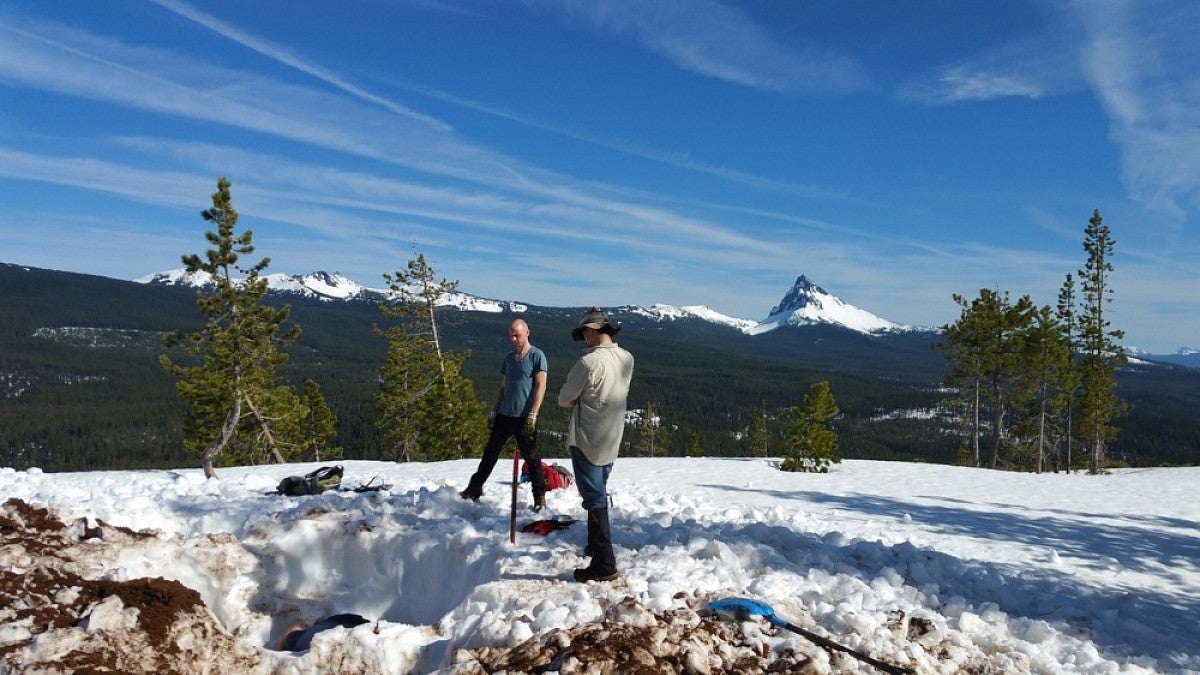Research by UO seismologist and earth sciences professor Douglas Toomey is shaping a new set of policy agendas designed to help Oregon prepare for a Cascadia earthquake and other natural disasters.
Toomey’s work on the ShakeAlert earthquake early warning system and its companion multihazard monitoring efforts informed Oregon Gov. Kate Brown’s just-released document, “Resiliency 2025: Improving Our Readiness for the Cascadia Earthquake and Tsunami.”
“Imagine technology that enables you and your family to be notified before earthquake shaking arrives or that helps to reduce the growing impacts of wildfires,” Toomey said. “That technology exists, and we’re getting closer to being able to roll it out to the public in Oregon.”
University of Oregon Department of Earth Sciences researchers, together with colleagues at the University of Washington, have been building out the Pacific Northwest Seismic Network for more than 25 years. The network is now supporting ShakeAlert, a collaboration of the U.S. Geological Survey; UO; University of Washington; University of California, Berkeley; and Caltech.
ShakeAlert will provide seconds to minutes of warning, allowing individuals to determine the best course of action for safety. Through automation, industry, utilities and transportation sectors will be able to power down or protect critical operations.
Implementing a statewide multihazards early warning system by the year 2023 is one of six strategies outlined in Brown’s Resiliency 2025 plan for improving Oregon’s preparedness for the Cascadia earthquake and tsunami. The plan calls for a multihazard warning approach that includes the ability to monitor and respond to wildland fires, landslides and other natural hazards.
“We want to build out a single, cost-effective, multihazards warning system,” Toomey said.

It provides access to state-of-the-art, pan-tilt-zoom fire cameras and associated tools to help firefighters and first responders detect, contain and mitigate wildfires. It will benefit Oregonians by offering program cost-sharing and leveraging technology for new purposes to protect natural resources and enhance public safety.
“The real barrier is that it takes time to generate funding,” Toomey said. “There is clear support from federal legislators and state legislators who think it’s an important thing to do. Translating that support into funding takes time, and that’s what we’ve been doing over the past few years.”
The governor’s plan includes a one-time request to the Oregon Legislature of $12 million in the 2019-21 biennium to fully build out Oregon’s multihazard sensor network by 2023.
Pilot projects using ShakeAlert and AlertWildfire have been implemented throughout Oregon. For example, the Oregon Department of Transportation is developing an automated warning light system on critical, heavy trafficked Oregon bridges not designed for seismic loads, signaling pedestrians and motor vehicles to take alternate routes. Should these bridges fail under strong shaking, the warning light system can prevent potential life-threatening safety hazards.
And the Rogue Valley Council of Governments is facilitating awareness of ShakeAlert in southwestern Oregon by crowd-sourcing solutions to systems or community issues. For example, a group of local engineers is developing a community database of building structure types within the county, noting each building's potential response to strong shaking.
With support from the Bureau of Land Management, University of Nevada, Reno and UO teams recently installed AlertWildfire cameras on Steens Mountain and in the Blue Mountains in southeastern Oregon and several mountaintops throughout northern Nevada. More AlertWildfire camera installations in Eastern Oregon are in the works.
“Continued investment in ShakeAlert and AlertWildfire is absolutely critical in order to have enough sensor density in this state to have the technology available to the public,” Toomey said. “We are grateful for Gov. Brown’s support and hope to win the support of the legislature next year.”
The ShakeAlert project receives support primarily from federals sources such as the USGS, which currently provides $12.2 million per year. However, state contributions in California and Washington mean that public alerts will come to Los Angeles, San Francisco and Seattle well before they come to Oregon.
Currently, Oregon’s ShakeAlert network is only 38 percent complete and public alerting is not possible until it is at least 75 percent complete. The resiliency plan and funding for the hazards network may be included in the governor’s recommended budget, which will be released in early December.
Final decisions on funding will not be made until the conclusion of the 2019 session. If the funding is provided, it will mean that public alerting will be available sooner to Oregonians.


